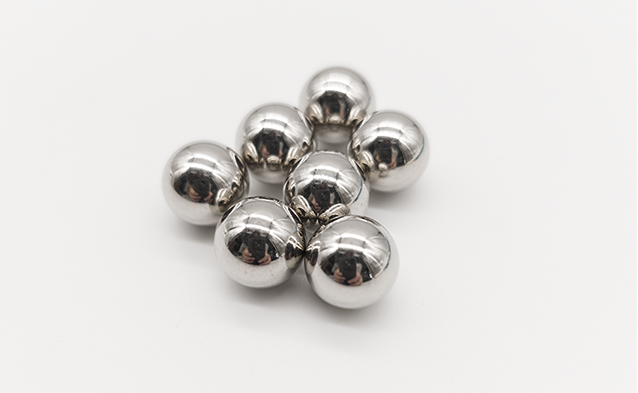
 Home > News
Home > NewsStainless steel balls are fundamental components in a wide range of mechanical systems, particularly in bearings, where they facilitate smooth, efficient, and reliable motion. The manufacturing process of these balls is meticulous, involving several stages to ensure precision and quality. This article delves into the detailed manufacturing process of stainless steel balls and explores their crucial application in bearings.

Wire Drawing:
The process begins with stainless steel wire, which is drawn through a series of dies to reduce its diameter to the required size. This step ensures that the wire is consistent and free from defects, providing a solid foundation for the subsequent steps.
Cutting:
The drawn wire is cut into small cylindrical pieces, known as slugs. Each slug's length is approximately equal to the diameter of the finished ball. This stage ensures that the material is prepared in manageable sizes for further processing.
Cold Heading:
The slugs are then fed into a cold heading machine, where they are struck between dies to form a rough spherical shape. This cold forging process gives the ball its initial form while ensuring high material density and uniformity.
Flash Removal:
The rough balls, now called “green balls,” are transferred to a flashing machine. Here, excess material (flashes) created during cold heading is removed. This step helps achieve a more refined spherical shape.
Heat Treatment:
The semi-finished balls undergo heat treatment to enhance their hardness and durability. This process involves heating the balls to a high temperature followed by controlled cooling. Proper heat treatment is essential for ensuring the balls can withstand the stresses and loads encountered in bearings.
Grinding:
After heat treatment, the balls are subjected to grinding, where they pass through various grinding machines. These machines use abrasive wheels to smooth the surface of the balls and bring them closer to the final dimensions. Grinding ensures precision and removes any remaining surface irregularities.
Lapping and Polishing:
The balls undergo lapping, a process that further refines their surface finish and improves dimensional accuracy. Lapping involves rotating the balls between two surfaces coated with an abrasive slurry. Polishing follows, using finer abrasives to achieve a mirror-like finish, reducing friction and wear.
Inspection:
Rigorous quality control checks are performed at various stages of the manufacturing process. Final inspection involves measuring the balls' diameter, roundness, surface finish, and hardness. Non-destructive testing methods, such as ultrasonic or magnetic particle inspection, may also be used to detect internal defects.
Packaging:
Once the balls pass all quality checks, they are cleaned, dried, and coated with a protective oil to prevent corrosion. Finally, they are packaged according to customer specifications, ensuring they remain in pristine condition until use.
Bearings are essential components in machinery, enabling rotational or linear movement while reducing friction and wear. Stainless steel balls are critical in various types of bearings due to their properties of high strength, corrosion resistance, and precision.
Ball Bearings:
Stainless steel balls are commonly used in ball bearings, which support radial and axial loads while minimizing friction. These bearings are prevalent in automotive applications, electric motors, and household appliances, where durability and low maintenance are crucial.
Roller Bearings:
In roller bearings, stainless steel balls serve as the rolling elements, providing smooth motion and high load-carrying capacity. They are used in industrial machinery, conveyor systems, and heavy-duty applications, offering longevity and reliability.
Thrust Bearings:
Thrust bearings utilize stainless steel balls to manage axial loads, ensuring smooth operation in applications like automotive transmissions, aerospace components, and rotary tables.
Linear Bearings:
Linear bearings incorporate stainless steel balls to facilitate linear movement along a shaft. These are vital in precision machinery, medical devices, and automated systems, where accuracy and repeatability are paramount.
Specialty Bearings:
Stainless steel balls are also used in specialty bearings designed for extreme environments, such as high temperatures, aggressive chemicals, or vacuum conditions. These bearings are essential in industries like chemical processing, food and beverage, and space exploration.
The manufacturing process of stainless steel balls is a complex sequence of precision-engineered steps that ensure the production of high-quality components vital for various applications, especially in bearings. The characteristics of stainless steel balls, such as strength, corrosion resistance, and precision, make them indispensable in bearing applications across numerous industries. Their role in enhancing the performance and longevity of bearings underscores their importance in modern engineering and industrial processes.
View More(Total0)Comment Lists